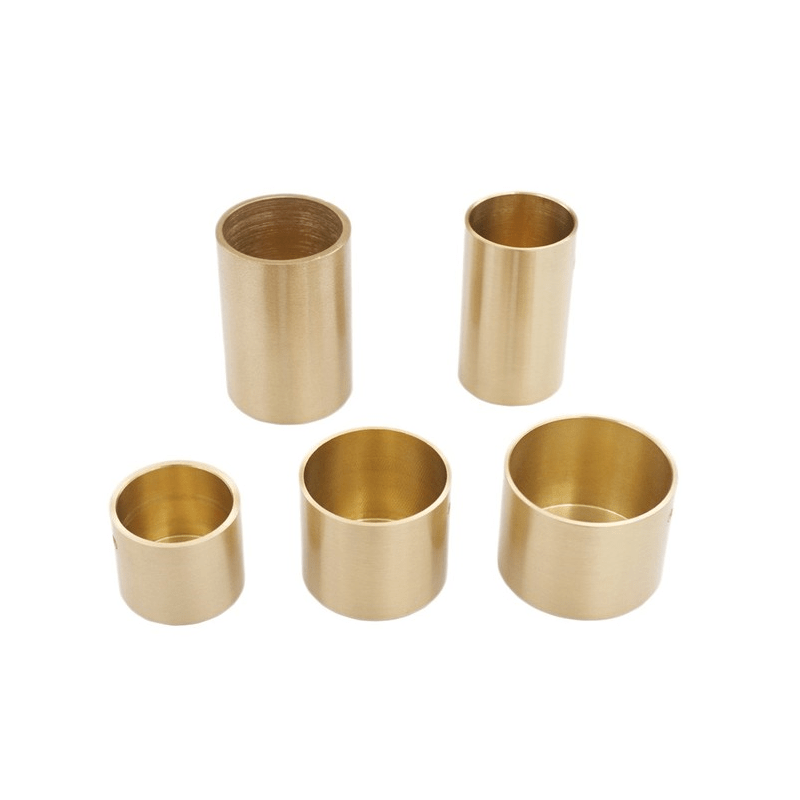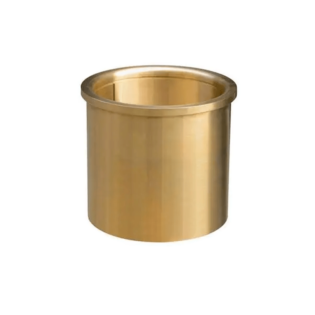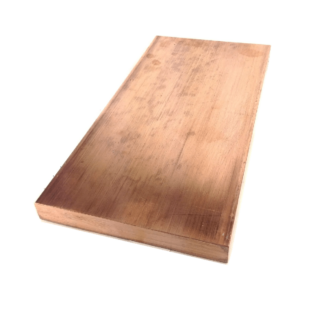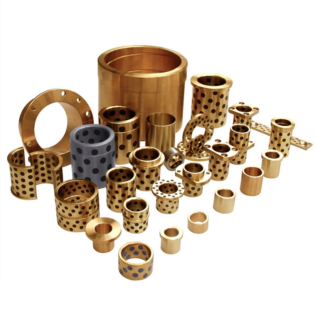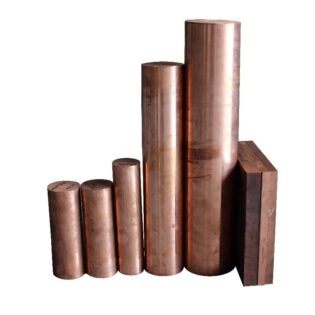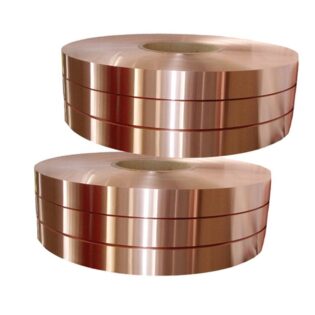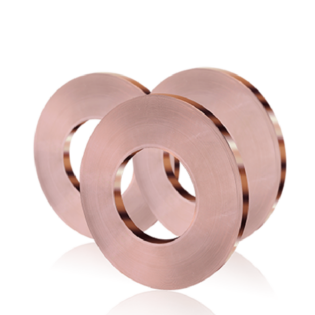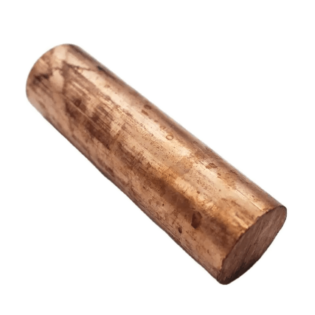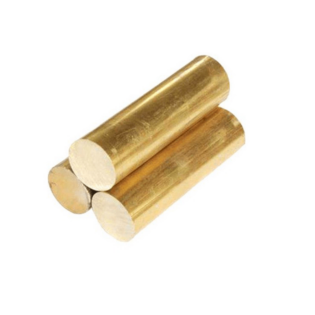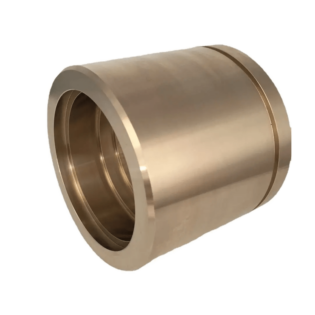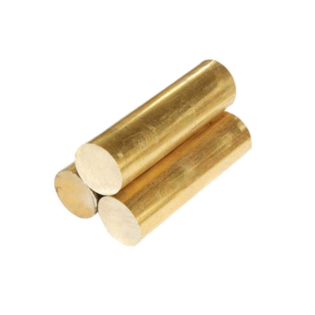C51000 Description
C51000 is a tin-phosphor bronze alloy with many excellent properties and a wide range of applications. In this article, we will focus on the characteristics and uses of C51000 copper alloy.
Introduction: C51000 tin-phosphorus bronze alloy is an important copper alloy material with excellent properties and diverse applications. Its chemical composition includes copper (Cu), phosphorus (P), tin (Sn), zinc (Zn), lead (Pb), iron (Fe) and nickel (Ni). C51000 copper alloy has excellent corrosion resistance, wear resistance and antimagnetic properties and is suitable for a variety of industrial fields. Next, we’ll explore the properties, uses, and answers to three questions about tin phosphor bronze.
Characteristics of C51000 tin phosphor bronze
Corrosion resistance: C51000 copper alloy shows high corrosion resistance in corrosive environments such as sea water and atmosphere, and can maintain good working condition.Wear resistance: This alloy has excellent wear resistance and can be used to manufacture wear-resistant parts and sliding bearings, and can maintain good working performance in high pressure and high friction environments.
Antimagnetic properties: C51000 alloy has good antimagnetic properties and is suitable for applications requiring antimagnetic materials.
Strength and elasticity: C51000 copper alloy has high strength and good elasticity, and can withstand large external loads.
Processing properties: The alloy has good pressure processing properties in both hot and cold states, and can be formed by hot pressing and cutting.
C51000 Tin Phosphor Bronze is an important copper alloy material with excellent properties and a wide range of applications. Its characteristics include corrosion resistance, wear resistance, antimagnetic properties, strength and elasticity, etc., and is suitable for manufacturing springs, wear-resistant parts, antimagnetic parts, etc. The chemical composition content of C51000 tin phosphor bronze is precisely controlled to ensure the performance stability of the alloy. By gaining a deeper understanding of the alloy’s properties and uses, we can better apply its advantages in various fields.
Usos típicos
Arquitetura: placas de suporte de ponte
Electrical: electrical connectors, electrical flexing contact blades, electromechanical spring components, electronic and precision instrument parts, electronic connectors, fuse clips, resistance wire, switch parts, wire brushes
Fasteners: cotter pins, fasteners, lock washers
Industrial: beater bar, bellows, bourdon tubes, chemical hardware, clutch disks, diaphragms, perforated sheets, pressure responsive elements, sleeve bushings, springs, textile machinery, truss wire, welding rods
Especificação semelhante ou equivalente
| CDA | ASTM | SAE | AMS | Federal | Militares | Outro |
|---|---|---|---|---|---|---|
| C51000 | B139 B139M | J461 J463 | 4625 |
Composição química
| Cu% | Pb% | Sn% | Zn% | Fe% | P% | ||||||
|---|---|---|---|---|---|---|---|---|---|---|---|
Composição química de acordo com ASTM B139/B139M-12(2017) Nota: Cu + soma dos elementos nomeados, 99,5% min. Valores únicos representam máximos. | |||||||||||
| Rem. | 00,05 | 4.20- 5.80 | 0.30 | 0.10 | 0.03- 0.35 | ||||||
Maquinabilidade
| Liga de cobre UNS No. | Classificação de usinabilidade | Densidade (lb/pol.3 a 68°F) |
|---|---|---|
| C51000 | 20 | 00,320 |
Propriedades mecânicas
C51000
H04 difícil
Faixa de tamanho: 1/4″ a 1/2″ redondo e hexagonal inclusive
| Resistência à tração, mín. | Resistência ao escoamento, com extensão de 0,5% sob carga, mín. | Alongamento, 4x Diâmetro ou Espessura da Amostra, mín. | Dureza Rockwell “B” | Observações | ||
|---|---|---|---|---|---|---|
| ksi | MPa | ksi | MPa | % | HRB típico | |
| 70 | 485 | 13 | 87 | |||
Faixa de tamanho: acima de 1/2″ a 1″ redondo e hexagonal inclusive
| Resistência à tração, mín. | Resistência ao escoamento, com extensão de 0,5% sob carga, mín. | Alongamento, 4x Diâmetro ou Espessura da Amostra, mín. | Dureza Rockwell “B” | Observações | ||
|---|---|---|---|---|---|---|
| ksi | MPa | ksi | MPa | % | HRB típico | |
| 60 | 415 | 15 | 87 | |||
Faixa de tamanho: mais de 1″ redondo e hexagonal
| Resistência à tração, mín. | Resistência ao escoamento, com extensão de 0,5% sob carga, mín. | Alongamento, 4x Diâmetro ou Espessura da Amostra, mín. | Dureza Rockwell “B” | Observações | ||
|---|---|---|---|---|---|---|
| ksi | MPa | ksi | MPa | % | HRB típico | |
| 55 | 380 | 18 | 87 | |||
C51000
H08 spring
Size range: 0.026″ to 1/16″ round inclusive
| Resistência à tração, mín. | Resistência ao escoamento, com extensão de 0,5% sob carga, mín. | Alongamento, 4x Diâmetro ou Espessura da Amostra, mín. | Dureza Rockwell “B” | Observações | ||
|---|---|---|---|---|---|---|
| ksi | MPa | ksi | MPa | % | HRB típico | |
| 115 | 790 | |||||
Size range: over 1/16″ to 1/8″ round inclusive
| Resistência à tração, mín. | Resistência ao escoamento, com extensão de 0,5% sob carga, mín. | Alongamento, 4x Diâmetro ou Espessura da Amostra, mín. | Dureza Rockwell “B” | Observações | ||
|---|---|---|---|---|---|---|
| ksi | MPa | ksi | MPa | % | HRB típico | |
| 110 | 760 | |||||
Size range: over 1/8″ to 1/4″ round inclusive
| Resistência à tração, mín. | Resistência ao escoamento, com extensão de 0,5% sob carga, mín. | Alongamento, 4x Diâmetro ou Espessura da Amostra, mín. | Dureza Rockwell “B” | Observações | ||
|---|---|---|---|---|---|---|
| ksi | MPa | ksi | MPa | % | HRB típico | |
| 105 | 725 | 3.5 | ||||
Size range: over 1/4″ to 3/8″ round inclusive
| Resistência à tração, mín. | Resistência ao escoamento, com extensão de 0,5% sob carga, mín. | Alongamento, 4x Diâmetro ou Espessura da Amostra, mín. | Dureza Rockwell “B” | Observações | ||
|---|---|---|---|---|---|---|
| ksi | MPa | ksi | MPa | % | HRB típico | |
| 100 | 690 | 5 | ||||
Size range: over 3/8″ to 1/2″ round inclusive
| Resistência à tração, mín. | Resistência ao escoamento, com extensão de 0,5% sob carga, mín. | Alongamento, 4x Diâmetro ou Espessura da Amostra, mín. | Dureza Rockwell “B” | Observações | ||
|---|---|---|---|---|---|---|
| ksi | MPa | ksi | MPa | % | HRB típico | |
| 90 | 620 | 9 | 95 | |||
Propriedades físicas
Propriedades físicas fornecidas pelo CDA *Determined on an alloy containing 5% tin and .2% phosphorus. This value will vary with the composition. | |||||||||||
| Costumeiro dos EUA | Métrica | ||||||||||
|---|---|---|---|---|---|---|---|---|---|---|---|
| Ponto de fusão – líquido | 1920 °F | 1049 °C | |||||||||
| Ponto de fusão – solidus | 1.750°F | 954°C | |||||||||
| Densidade | 0.32 lb/pol3 a 68 °F | 8,86 gm/cm3 a 20°C | |||||||||
| Gravidade Específica | 8,86 | 8,86 | |||||||||
| Condutividade elétrica* | 15% IACS at 68 °F | 0.088 MegaSiemens/cm at 20 °C | |||||||||
| Condutividade térmica | 40 Btu/sq ft/ft hr/°F at 68 °F | 69.2 W/m at 20 °C | |||||||||
| Coeficiente de expansão térmica 68-572 | 9.9 ·10-6 por °F (68-572 °F) | 17.1 ·10-6 por °C (20-300 °C) | |||||||||
| Capacidade de calor específico | 00,09 Btu/lb/°F a 68°F | 377,1 J/kg a 20°C | |||||||||
| Módulo de elasticidade em tensão | 16.000 ksi | 110310MPa | |||||||||
| Módulo de rigidez | 6.000 ksi | 41370MPa | |||||||||
Propriedades de fabricação
Propriedades de fabricação fornecidas pela CDA | |||||||||||
| Técnica | Aptidão | ||||||||||
|---|---|---|---|---|---|---|---|---|---|---|---|
| De solda | Excelente | ||||||||||
| Brasagem | Excelente | ||||||||||
| Soldagem oxiacetileno | Justo | ||||||||||
| Soldagem a arco com proteção a gás | Bom | ||||||||||
| Soldagem a arco de metal revestido | Justo | ||||||||||
| Ponto de solda | Bom | ||||||||||
| Solda de costura | Justo | ||||||||||
| Solda de topo | Excelente | ||||||||||
| Capacidade para ser trabalhado a frio | Excelente | ||||||||||
| Capacidade para ser formado a quente | Pobre | ||||||||||
| Classificação de usinabilidade | 20 | ||||||||||
Propriedades térmicas
Propriedades térmicas fornecidas pelo CDA *A temperatura é medida em Fahrenheit. | |||||||||||
| Tratamento | Mínimo* | Máximo* | |||||||||
|---|---|---|---|---|---|---|---|---|---|---|---|
| anelamento | 900 | 1250 | |||||||||
Processos de fabricação comuns
Blanking, drawing, forming and bending, heading and upsetting, roll threading and knurling, shearing, stamping
Processos de fabricação comuns fornecidos pelo CDA
